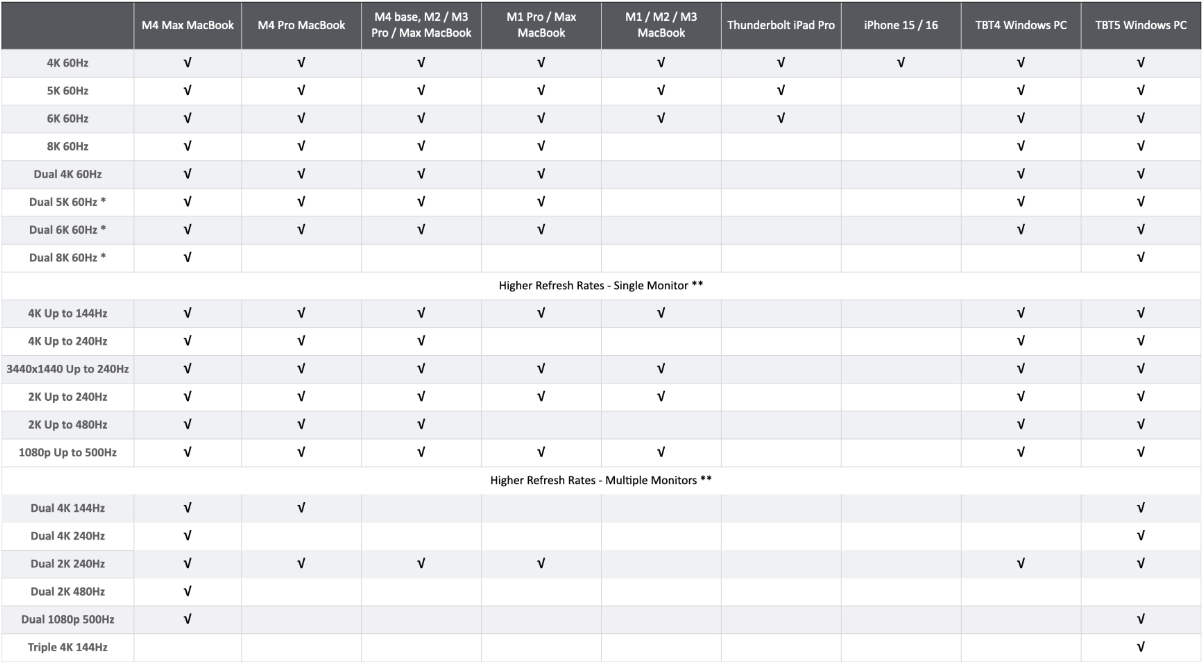Windows Central Verdict
CalDigit's TS5 costs $100 less than the TS5 Plus, yet it has most of the features that the average professional desires. No Thunderbolt Share or built-in SSD slot might be a dealbreaker for some, but at its heart, the TS5 is a high-performance, durable, and versatile Thunderbolt 5 docking station that I can recommend.
Pros
- +
15 total ports with up to 20W charging for accessories; 140W charging for host
- +
One additional downstream Thunderbolt 5 port with DP2.1 support
- +
Compact, durable, and versatile
- +
Dual 8K@60Hz or triple 4K@144Hz external display support
Cons
- -
Ethernet drops to 2.5Gb
- -
No native video out
- -
No Thunderbolt Share or SSD slot
- -
Still quite expensive at $400
- -
5 fewer ports than the TS5 Plus
Why you can trust Windows Central
CalDigit launched two new flagship Thunderbolt 5 docking stations for laptops this year, and I was able to get my hands on the CalDigit TS5 Plus shortly after it entered the market.
I called it "the best Thunderbolt 5 dock for Windows power users" in my review, noting that its $500 price tag and premium features would be overkill for the vast majority of workflows.
CalDigit's TS5 — without the additional "Plus" — is another high-performance dock, albeit with fewer ports and, in some areas, less ability. I've been using it on my desk for the past few weeks to get a good idea of where it excels and why you might want to consider it over its Plus sibling and other connectivity competitors.
This review was made possible thanks to a review sample provided by CalDigit. CalDigit had no input nor saw the contents of this review prior to publication.

I've been testing and reviewing docking stations for a decade, and although they're not the most exciting hardware around, I have a certain passion for providing the perfect dock for your laptop and workflow.
How does CalDigit's TS5 compare to the TS5 Plus?
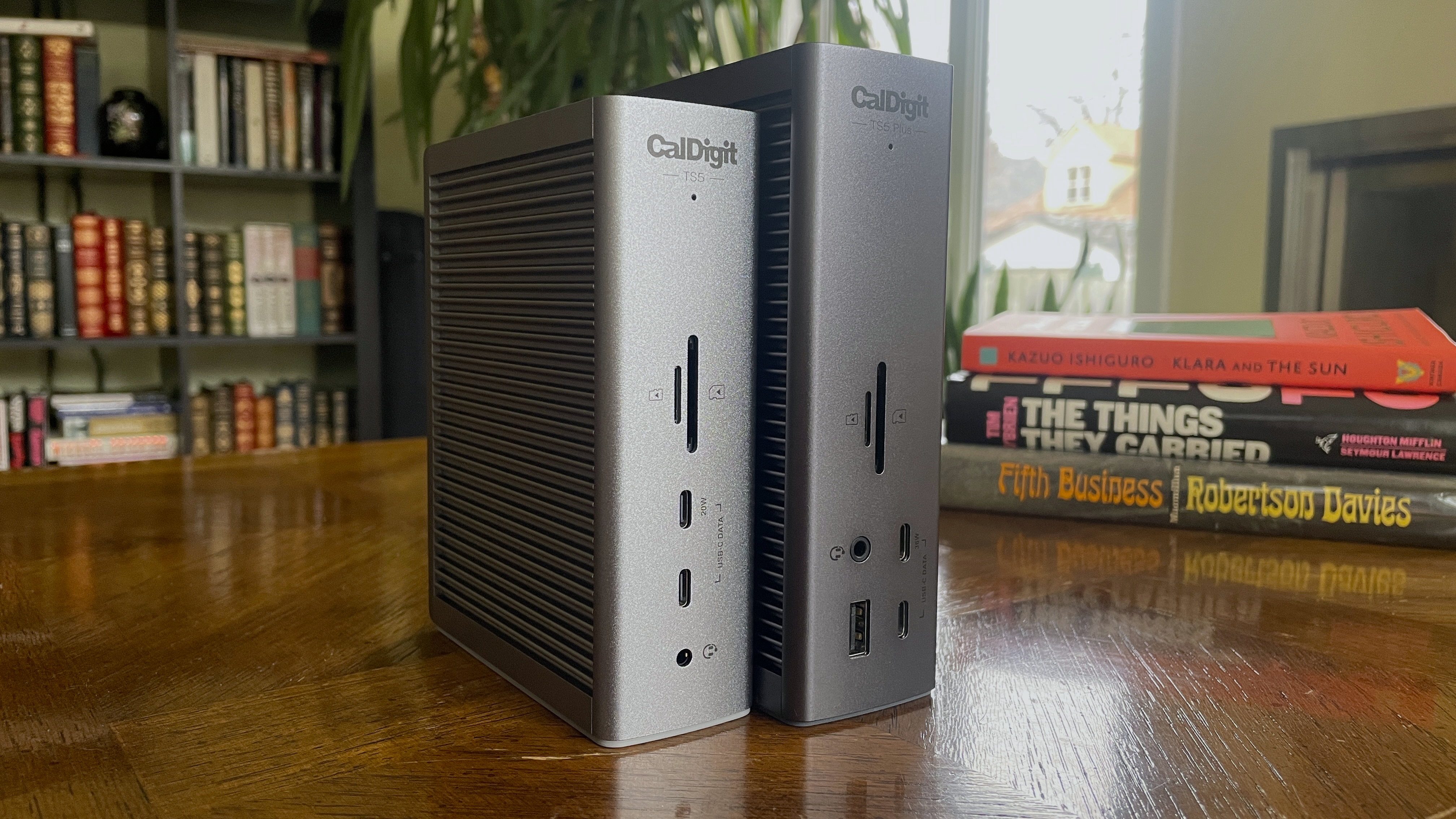
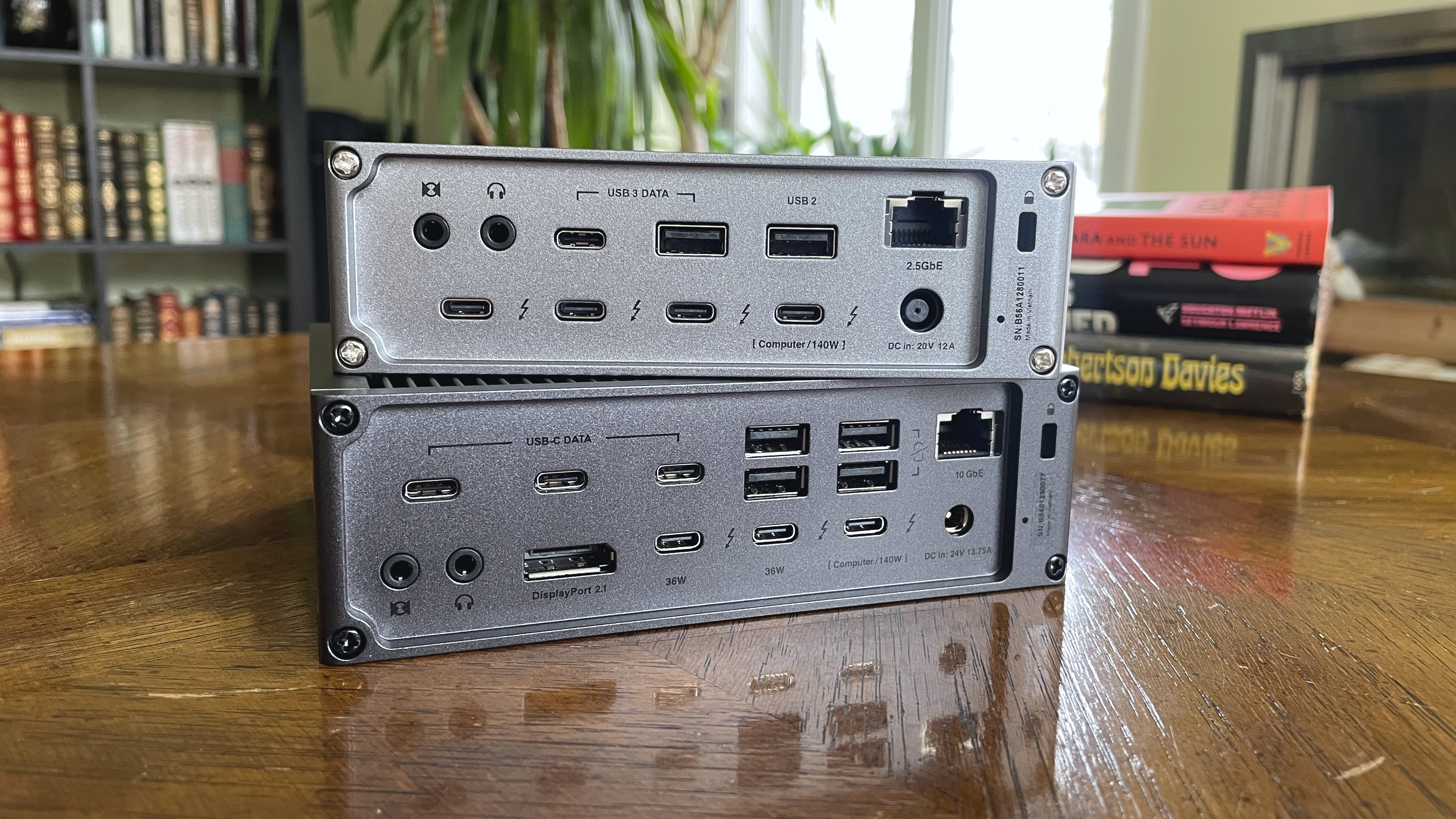
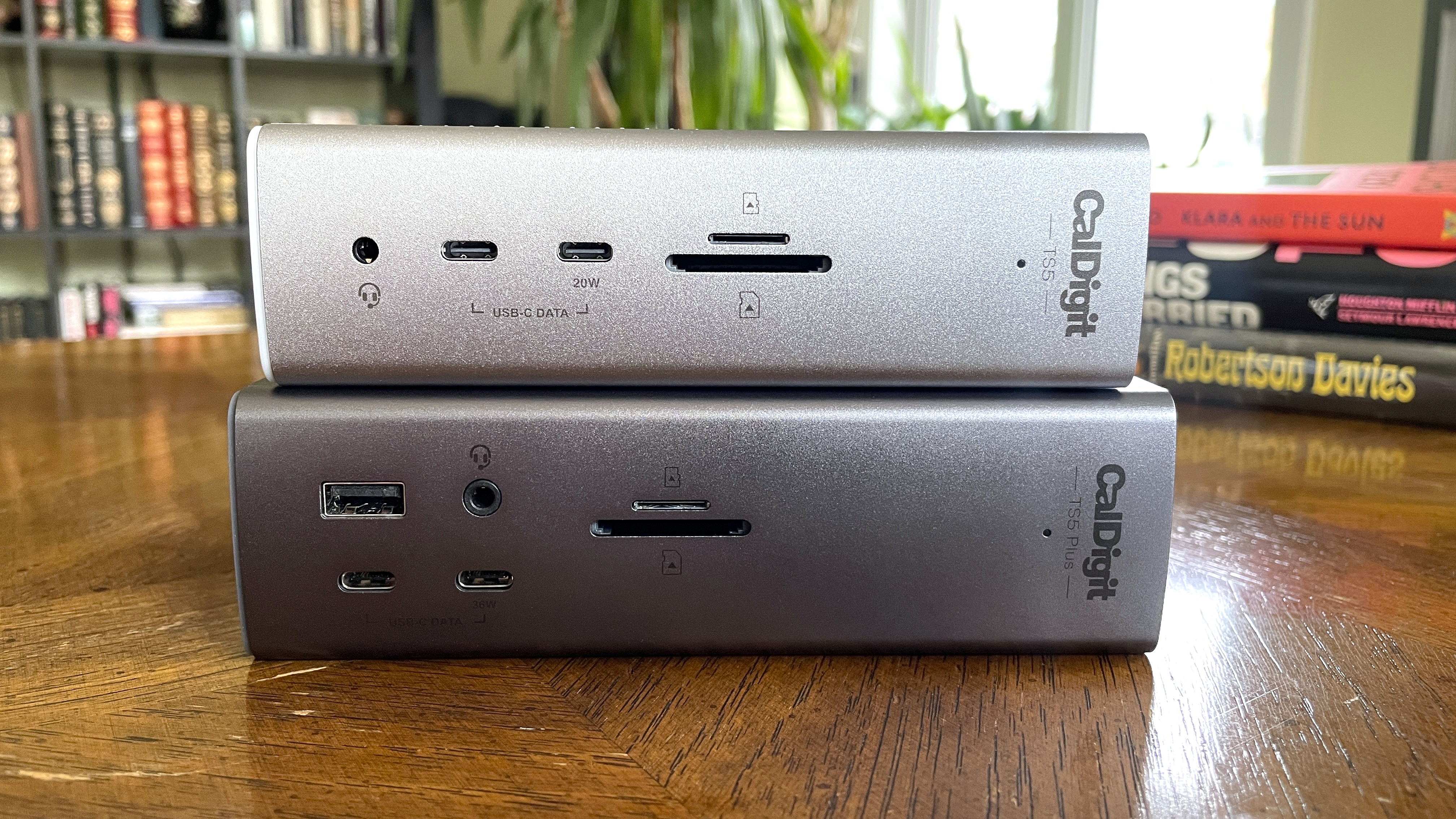
CalDigit's TS5 and TS5 Plus share the same design language, with ribbed aluminum panels that better disperse heat, a grippy pad on the bottom for vertical mode, additional rubber runners for horizontal mode, and a ton of ports on the front and back faces.
This design has been around for several generations, and I see no reason to change it. It's durable, it's versatile, and it doesn't overheat. The TS5 is significantly smaller than the TS5 Plus, and it has fewer ports, totalling 15 (if you count the host TB5 hookup), compared to 20 in the TS5 Plus.
Here's a closer look at the raw specs that go into each of these CalDigit docks.
| Header Cell - Column 0 | CalDigit TS5 | CalDigit TS5 Plus |
|---|---|---|
Host connection | Thunderbolt 5 (120Gbps) | Thunderbolt 5 (120Gbps) |
Front ports | USB-C 3.2 (Gen 2, 20W); USB-C 3.2 (Gen 2, 7.5W); 3.5mm audio combo; UHS-II microSD/SD card readers | USB-A 3.2 (Gen 2, 7.5W); USB-C 3.2 (Gen 2, 36W); USB-C 3.2 (Gen 2, 7.5W); 3.5mm audio combo; UHS-II microSD/SD card readers |
Rear ports | USB-C 3.2 (Gen 2, 7.5W); USB-A 3.2 (Gen 2, 7.5W); USB-A 2.0 (7.5W); 2.5Gb Ethernet; 3.5mm audio in/out; 3x Thunderbolt 5 (USB4v2, 15W, 80Gb/s); Thunderbolt 5 (host, 140W) | 3x USB-C 3.2 (Gen 2, 7.5W); 4x USB-A 3.2 (Gen 2, 7.5W); 10Gb Ethernet; 3.5mm audio in/out; DisplayPort 2.1; 2x Thunderbolt 5 (USB4v2, 36W, 80Gb/s); Thunderbolt 5 (host, 140W) |
Power | Up to 140W host charging, 240W AC adapter | Up to 140W host charging, 330W AC adapter |
Max display res. | Dual 8K@60Hz, Triple 4K@144Hz | Dual 8K@60Hz, Triple 4K@144Hz |
Dimensions | 5.55 (H) x 4.46 (L) x 1.65 (W) inches | 6.10 (H) x 5.03 (L) x 1.85 (W) inches |
Material | Aluminum chassis | Aluminum chassis |
Warranty | 2 years | 2 years |
Compatibility | Thunderbolt 5, Thunderbolt 4, USB4/USB4v2, USB-C; Windows 11, macOS 15 or newer; Not compatible with Thunderbolt 3 Windows PCs | Thunderbolt 5, Thunderbolt 4, USB4/USB4v2; Windows 11, macOS 15 or newer; Not compatible with Thunderbolt 3 Windows PCs |
Price |
On the front of the dock, the TS5 drops the USB-A port, instead focusing on dual USB-C — both offer 10Gb/s transfer speeds, one charges at 7.5W, the other at 20W. There are also SD and microSD UHS-II SD card readers, plus a 3.5mm audio jack, just like on the TS5 Plus.
All the latest news, reviews, and guides for Windows and Xbox diehards.
The back of the TS5 lacks DisplayPort 2.1, and it has two fewer USB-C ports. It holds onto a single USB-C 3.2 (Gen 2) at 7.5W, USB-A 3.2 (Gen 2) at 7.5W, and USB-A 2.0 at 7.5W. It also has three downstream Thunderbolt 5 ports (one more than the TS5 Plus) and a Thunderbolt 5 host port.
The Ethernet connection drops to 2.5Gb speeds in the regular TS5, compared to 10Gb/s in the TS5 Plus.
This design has been around for several generations, and I see no reason to change it. It's durable, it's versatile, and it doesn't overheat.
What CalDigit has essentially done here is distill the TS5 Plus into a more compact and affordable docking station that's nevertheless aimed at pros. It loses out on native DisplayPort, but it picks up an additional downstream Thunderbolt 5 port with DP2.1 support built in. Its Ethernet hookup isn't as fast, but 2.5Gb will be enough for a huge number of users.
It also misses out on three additional USB-A ports and two USB-C ports found in the TS5 Plus, but I'm not sure that will make enough of a difference for most users; I can get by just fine with the three USB-C and two USB-A ports on the standard TS5.
Host charging at up to 140W is available across both models, and that's despite the TS5 coming with a smaller 240W AC adapter. CalDigit lists Windows PCs with USB-C connectivity as being compatible with the standard TS5, something that's not included for the TS5 Plus.
The TS5's display support is just as good despite a lack of native DisplayPort
The standard TS5 might lack a native output for DisplayPort 2.1, but that doesn't change the overall support for external monitors. Thanks to support for DP2.1 via the Thunderbolt ports, you can run up to triple 4K displays each at 144Hz on Windows PCs using Thunderbolt 5.
Dual 8K displays at 60Hz each are also on the table, but only with a Thunderbolt 5 PC. Dropping down to Thunderbolt 4 will have display support topping out at dual 6K at 60Hz each, and no support for three monitors.
There are docking stations that offer better display support. Plugable's TBT-UDT3 Thunderbolt 5 dock that I've been playing around with has significantly fewer ports than the TS5, but it does handle dual 8K displays at 120Hz each.
Again, that's overkill for the vast majority of users, but it is an option.
Can you live without Thunderbolt Share and a built-in SSD slot?
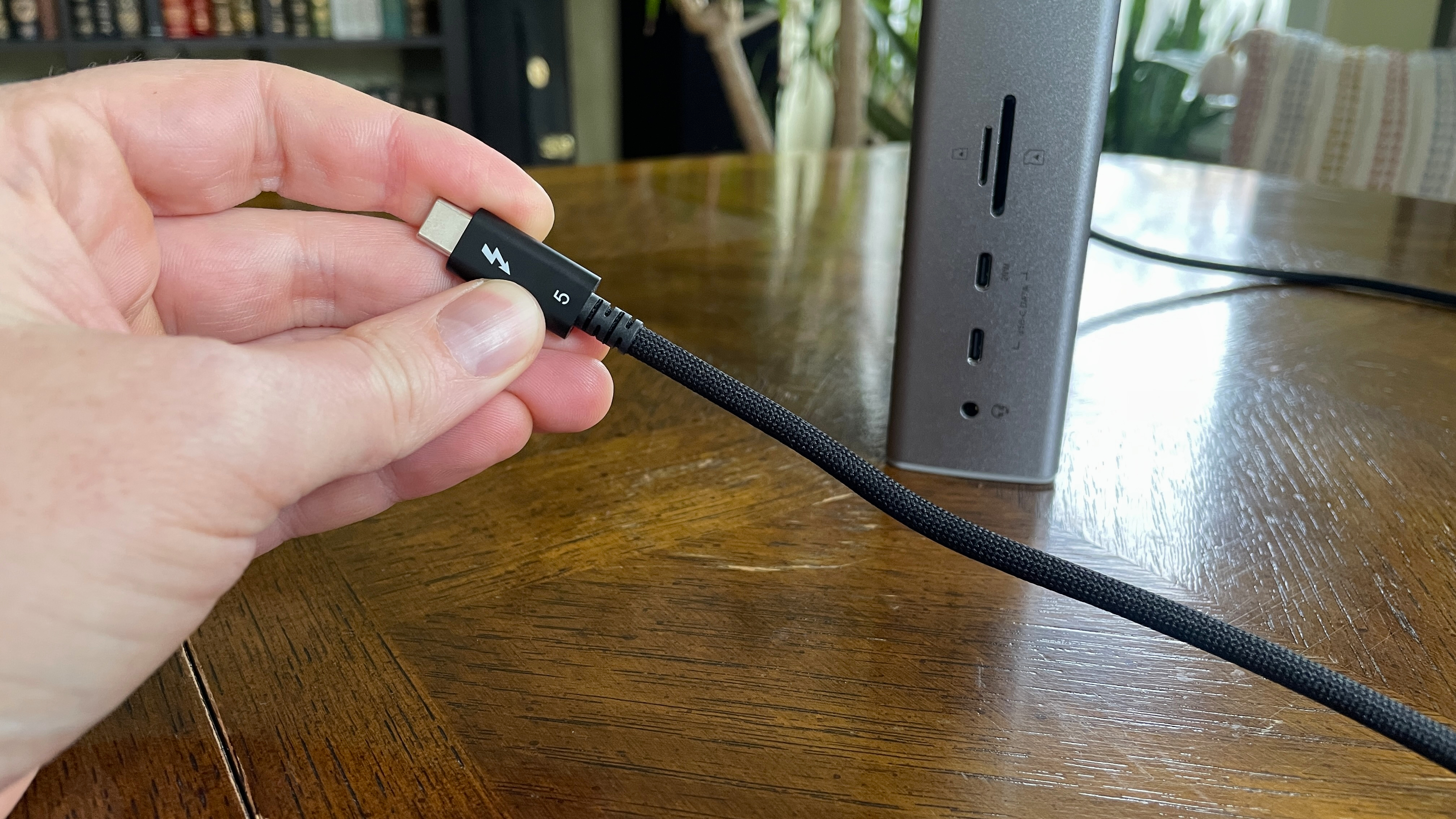
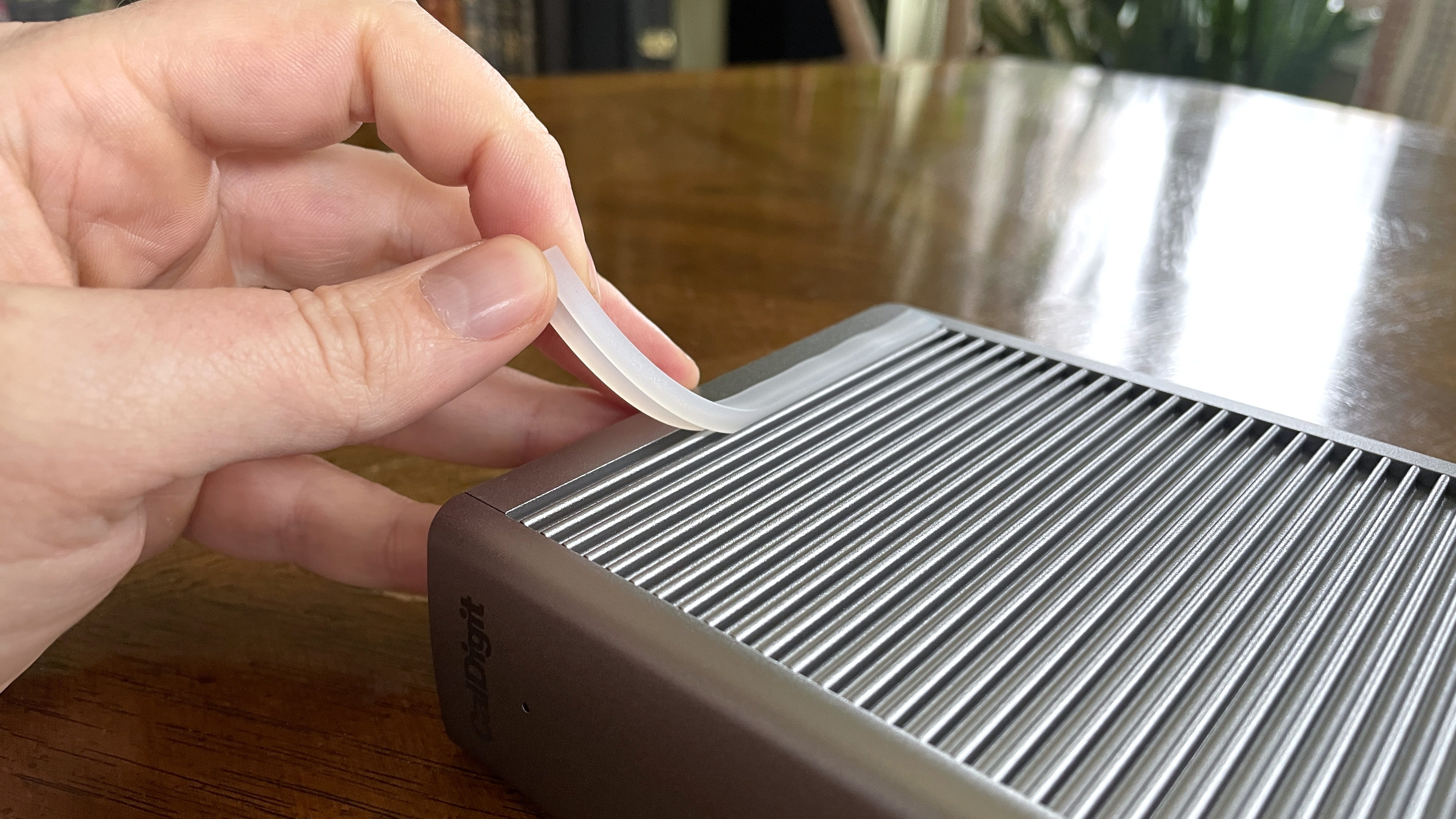
One feature that I can't get enough of has been appearing lately in modern Thunderbolt 5 docks, including Razer's Thunderbolt 5 Dock Chroma and Kensington's SD7100T5 EQ Pro.
I'm talking about a built-in M.2 slot with support for PCIe 4.0 NVMe SSDs. Having a fast drive available for any connected devices is a massive boon, especially for someone like me who often works across PCs.
Unfortunately, this feature didn't make it into CalDigit's TS5 or TS5 Plus. The upside, at least, is that the docks support 64Gb/s PCIe transfers with external storage connected via Thunderbolt.
Another feature that didn't make it into CalDigit's 2025 lineup is Thunderbolt Share. Intel's tech allows for two laptops to directly drag and drop files, to sync files, to transfer a PC's entire data to a new PC, and to control the other connected PC.
At least one PC needs to be licensed for Thunderbolt Share for this to work. As a backup, you can also buy a dock with Thunderbolt Share baked right in, removing the need for individual licensing on PCs. Razer's latest Dock Chroma has the feature, as does the Plugable TBT-UDT3.
It's a niche feature for sure, but it would be nice to see it arrive in CalDigit's premium hardware.
CalDigit TS5 review: My final thoughts
✅You should buy this if ...
- You need a dock with the most downstream Thunderbolt 5 ports possible.
- You have a PC with Thunderbolt 5 or Thunderbolt 4.
- You need a dock that can support up to three external displays.
❌You should not buy this if ...
- You need a dock with Thunderbolt Share baked in.
- You need a dock with a built-in M.2 SSD slot.
- You need a native video out port.

CalDigit's two-pronged approach to its flagship docking stations gives you more options at the high end of the market. For my workflow, the TS5 is more than enough, and I suspect most users will discover the same.
Not only is it $100 cheaper than the TS5 Plus, but it's more compact and delivers an extra downstream TB5 connection at the expense of native DisplayPort. Everything works flawlessly across the board, and I had no performance issues while using the dock for everyday work.
Neither of CalDigit's latest docks has Thunderbolt Share baked in, and neither has an M.2 SSD slot for additional semi-permanent storage. The SSD slot is a feature that I particularly love, but I understand that it's not a feature that should come with every dock out there.
If you would indeed like a dock with those features, I recommend checking out the Razer Thunderbolt 5 Dock Chroma for about $400. Kensington's SD7100T5 EQ Pro at about $450 includes an M.2 SSD slot but lacks Thunderbolt Share. Nevertheless, it's a strong alternative to the TS5 at about $450.

CalDigit's TS5 costs $100 less than the TS5 Plus, yet it has most of the features that the average professional desires. No Thunderbolt Share or built-in SSD slot might be a dealbreaker for some, but at its heart, the TS5 is a high-performance, durable, and versatile Thunderbolt 5 docking station that I can recommend.

Follow Windows Central on Google News to keep our latest news, insights, and features at the top of your feeds!

Cale Hunt brings to Windows Central more than nine years of experience writing about laptops, PCs, accessories, games, and beyond. If it runs Windows or in some way complements the hardware, there’s a good chance he knows about it, has written about it, or is already busy testing it.
You must confirm your public display name before commenting
Please logout and then login again, you will then be prompted to enter your display name.



